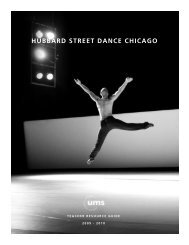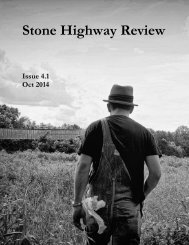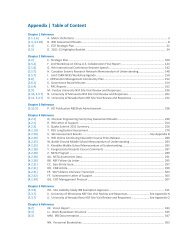Fries
Fries
Fries
You also want an ePaper? Increase the reach of your titles
YUMPU automatically turns print PDFs into web optimized ePapers that Google loves.
Charles C. <strong>Fries</strong>, linguistics and corpus linguistics2.3 The paradigmatic aspect of language is essential<strong>Fries</strong> consistently argued against treating language as a set of disconnecteditems. Rather, in his view it was the relations among these items that wasimportant. One can see implications of this view in the fact that he distrustedphonetic similarity as anything more than a useful field technique for making aphonemic analysis. What was critical was the role of the sounds in the system asa whole. (See P. <strong>Fries</strong> 1983 for a more careful discussion of this point.) In hisbook Linguistics and reading (1963: 62), we find <strong>Fries</strong> speaking more generallyabout the importance of contrast:There is power or force in the structural system itself. The habits thatconstitute the control of one’s native language are not habits concerningitems as items, but habits concerning contrastive items as functioningunits of an ordered system of structural patterns.And a few pages later (1963: 64):From our structural point of view, items such as these [“items ofsounds that must be pronounced, the individual words that must beidentified with the meanings, the parts of sentences that must be classified”]have no linguistic significance by themselves. Only as suchitems contrast with other items in the patterns of an arbitrary system dothey have linguistic significance. In other words, all the significantmatters of language are linguistic features in contrast.His emphasis on contrast and the underlying paradigmatic relations is evident inhis treatment, in The structure of English (1952: 79), of the words that belongedto the major classes:It is not enough for our purposes to say that a Class I word [~ noun] isany word that can fill certain positions in the structure of our sentence,even if we enumerate all these positions. We want to know what thespecial characteristics of these words are that make them recognizablydifferent from the words used in other positions. To discover thesecharacteristics we need to explore these other positions and form comparablelists of words that can fill these positions. Significant formalcharacteristics of each class will appear then in the contrasts of oneclass with another.As a means of achieving this goal, his Chapter 7 of that book (The structure ofEnglish) addresses the formal characteristics of parts of speech. While the chapterbegins by addressing an aspect of the morphological make-up of the words97








